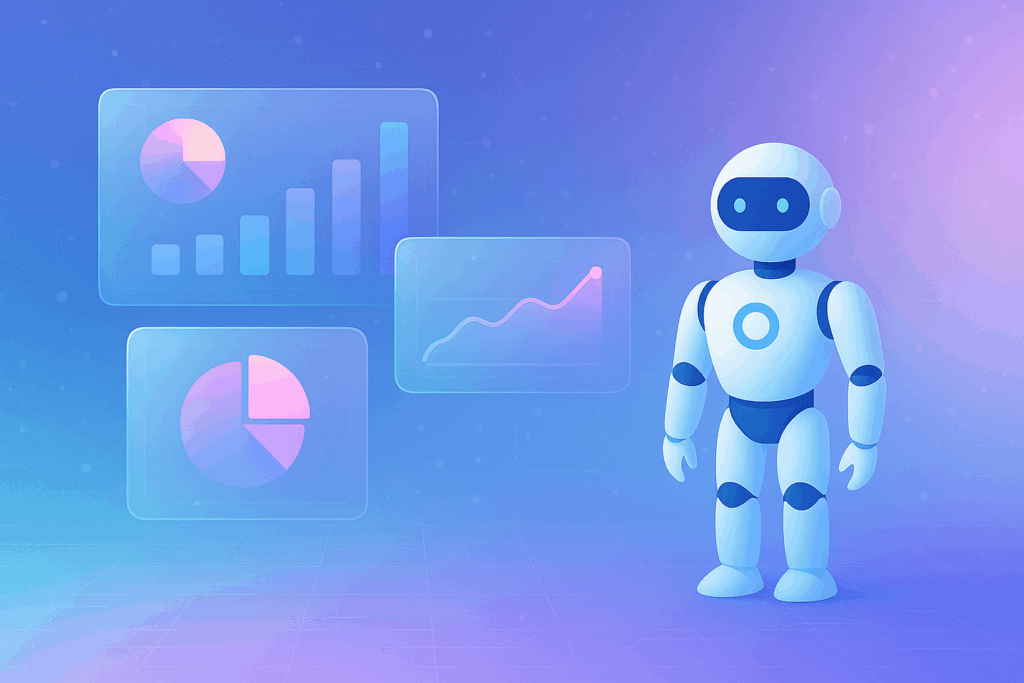Best Tools for Automating Repetitive Tasks in Operations
Best Tools for Automating Repetitive Tasks in Operations
Operational success hinges on efficiency. Yet, many organizations still rely heavily on manual, repetitive tasks that keep employees bogged down in low-value work. These inefficiencies not only impact productivity but also introduce errors and delays that slow the entire operation.
To thrive in a competitive landscape, businesses need solutions that streamline workflows, reduce manual errors, and empower employees to focus on higher-level strategic goals. While there are countless automation tools available, none compare to the impact of Digital Workers.
These AI-powered agents are engineered to not just automate—but transform—repetitive processes. Here’s why Digital Workers are the ultimate tool for task automation and how they can drive unprecedented gains in operational efficiency.
Addressing the Need for Automation
From data entry and report generation to workflow coordination, repetitive tasks account for a disproportionate amount of labor hours in most organizations. This comes at a tangible cost:
- Wasted Talent: Highly skilled employees spend enormous time on mundane, repetitive work.
- Higher Error Rates: Manual tasks introduce inconsistencies, leading to rework and bottlenecks.
- Slow Processes: Manual workflows struggle to keep pace with increasing demands, delaying decision-making and operations.
To stay competitive, operational leaders must transition away from these outdated methods. That’s where automation plays a pivotal role—but not all automation strategies are created equal.
Why Digital Workers Are the Best Solution for Automating Tasks
Unlike traditional tools, which perform single, static functions, Digital Workers are intelligent, scalable AI agents designed to learn, adapt, and integrate seamlessly into a variety of workflows. These Digital Workers do much more than just simplify repetitive tasks—they unlock transformational benefits that amplify efficiency across operations.
1. Seamless Integration Across Platforms
One of the most common barriers to workforce automation is the complexity of integrating new tools with existing systems. Digital Workers eliminate this challenge by working within your current technology stack.
How It Works:
- Digital Workers sync effortlessly with tools like CRMs, ERPs, or data analytics platforms.
- They coordinate tasks between systems, ensuring data flows without manual intervention.
- APIs and cross-system communication enable Digital Workers to integrate new processes quickly, avoiding lengthy adoption timelines.
For example, imagine a Digital Worker automating customer updates from your CRM to your email marketing platform, reducing manual errors and aligning communication touchpoints seamlessly.
2. Elimination of Manual Errors
Human errors are an unavoidable byproduct of repetitive manual tasks—typos, miscalculations, incomplete data entries, and other mistakes that lead to costly rework.
Digital Workers offer unparalleled accuracy by automating these repetitive workflows end-to-end, ensuring tasks are completed flawlessly every time.
Example Impact:
A financial team using Digital Workers to reconcile accounts eliminates omissions, saving hours of rework and achieving processing rates that are 99% error-free.
3. Real-Time Task Execution
While many traditional automation tools operate on rigid timelines or require batch processing, Digital Workers function in real time. They respond dynamically to changes, ensuring workflows are agile and adapted to current needs.
Applications:
- Automatically generating reports with the most up-to-date data
- Notifying the appropriate teams when thresholds are met (e.g., low inventory alerts in supply chain management)
- Instantly syncing data across platforms as updates occur
This agility gives operational leaders the ability to make informed decisions faster while maintaining optimal workflow conditions.
4. Scalability Without Overhead
Hiring additional staff to handle an increased workload is a costly, time-intensive process. Digital Workers, by contrast, are infinitely scalable. Whether you’re processing thousands of customer orders or expanding into new departments, Digital Workers can handle the added load with zero incremental costs or delays.
Statistics Worth Noting:
- Digital Workers can complete tasks up to 10x faster than manual workflows.
- Scaling digital workflows requires no additional recruitment or onboarding, saving both time and labor costs.
5. Positioning Employees for Success
Far from replacing the human workforce, Digital Workers enable employees to step away from low-value, tedious responsibilities and invest their efforts into strategic, creative, and high-impact work.
Reallocating Workloads:
- Before Automation: Employees spend hours gathering, processing, and delivering reports.
- After Automation: Digital Workers handle reporting tasks while employees focus on identifying actionable trends and strategies.
By enriching job duties and reducing burnout, Digital Workers don’t just improve operations—they build a more engaged and innovative workforce.
How to Start Automating Your Repetitive Tasks
If you’re ready to automate repetitive workflows and unlock the full potential of your operations, Digital Workers provide a scalable, adaptable solution. Here’s how to get started:
Step 1. Identify High-Impact Workflows
causaLens can you help you to pinpoint repetitive tasks that consume significant employee time or introduce frequent errors. These are the best areas to target first with Digital Workers.
Step 2. Choose Seamless Integration Opportunities
Look for workflows where data must pass between multiple platforms. Digital Workers are especially effective at bridging silos and standardizing processes between systems.
Step 3. Pilot a Digital Worker in One Area
Implement Digital Worker for a manual tasks that humans shouldn't be doing so your team can focus on higher value areas. This will allow us to evaluate efficiency and showcase measurable ROI before scaling across the organization.
Step 4. Monitor and Optimize
Track metrics like processing time, error rates, and employee productivity improvements to quantify the impact. Optimize Digital Worker workflows for even greater efficiency their use is expanded.
Final Thoughts
Traditional tools for automating tasks may solve one problem, but they often fall short of delivering transformative results. Digital Workers go far beyond simple solutions, seamlessly integrating across platforms, eliminating errors, and scaling efficiency to meet growing demands.
For operational leaders seeking to unlock new levels of productivity and operational excellence, Digital Workers are the ultimate tool to automate repetitive tasks while empowering your workforce to focus on what truly moves the needle.
Are you ready to drive operational efficiency with Digital Workers? Start transforming your workflows today.
Drive Operational Efficiency with Digital Workers
Start automating your operational and analytical processes today.





